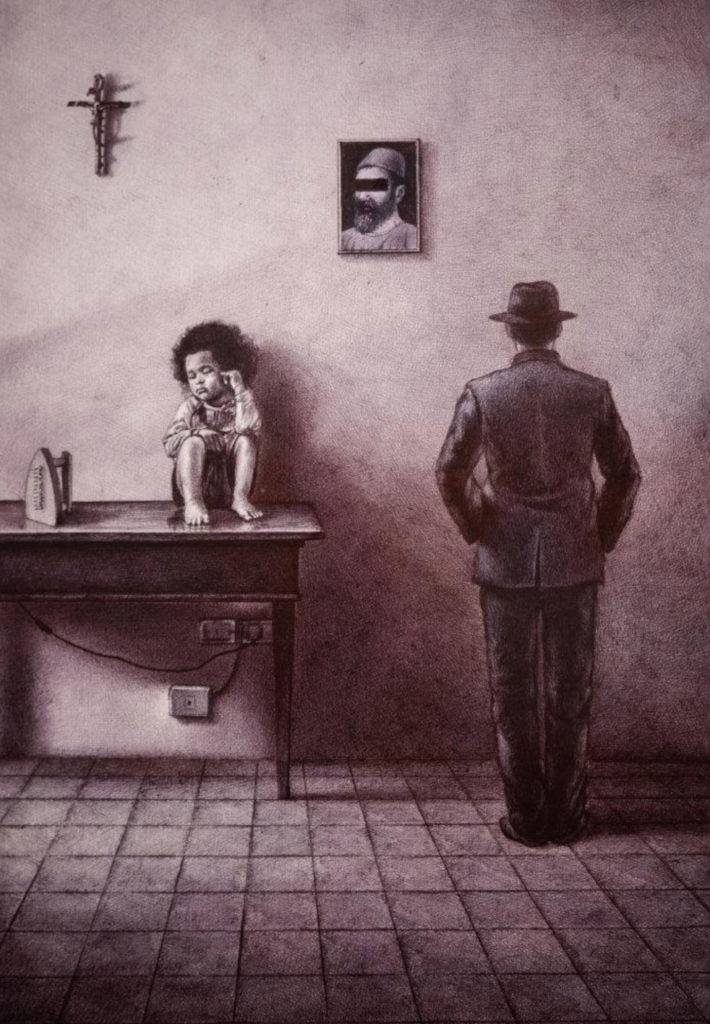
MLF l Marie-Laure Fleisch is pleased to announce Giuseppe Stampone’s new solo show, The Three Graces. With creations ranging from videos to multimedia installations, Stampone offers us a selection of his singular drawings made with Bic pens, which are at the heart of his practice. As precise and meticulous as he has always been, the obvious critique about current moments of our history have left room for more personal narratives.
From album covers reinterpretations to the incorporation of migrants in classical paintings, the artist communicates his activism by associating well-known contemporary images to subtle references from art history. Thus, the artist’s critical thinking finds a universal perspective, extricating itself from the communitarianism that tends to win ideologies these days. In addition, Stampone always paid particular attention to the use of traditional techniques associated with art. The artist considers his exceptionally long creative process as a protest against the constant frenzy imposed by our century.
Made during COVID times, this newest body of works invites us to the quiet meditation motivated by the exclusive representation of architectural interiors, inspired by Dutch painters such as Vermeer and Pieter de Hooch. Houses are one of those few places where one can find refuge from the constant and mostly-confusing news feed. Represented in almost all of the exhibited drawings, the artist often drawn from behind, with a contemplative posture. Indeed, like for the most of us, Stampone had to stay confined for the past year. This sudden and unwanted change in habits led the artist to completely call himself into questions, while in the process, turned him toward the great masters of art history, searching for his answers.
The exhibition takes its title from one of Stampone’s drawings but is also a tribute to the painting of Raphael. Inspired by the classical antiquity, the three women in the original work could represent stages of development of womanhood but they are often considered as muses, symbol of human creativity. Stampone recreates the trio on an autobiographical perspective, representing himself in his childhood, his youth and nowadays, thus creating his own mythology. Perhaps these works are a proposition for us all to take a step back; to pause long enough in order to contemplate the field of possibilities and discover what we would like to see emerging from it, once this period of doubt will be behind us.